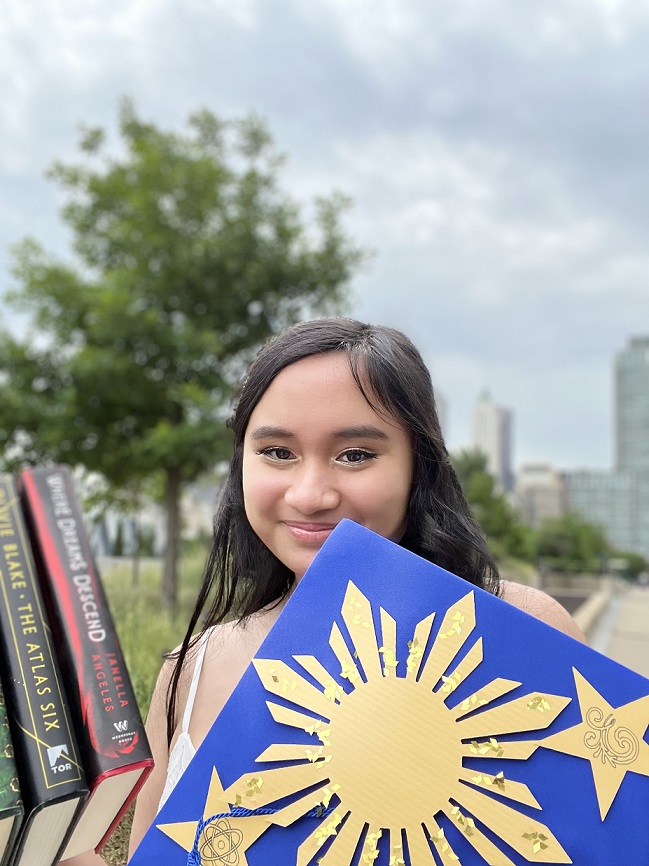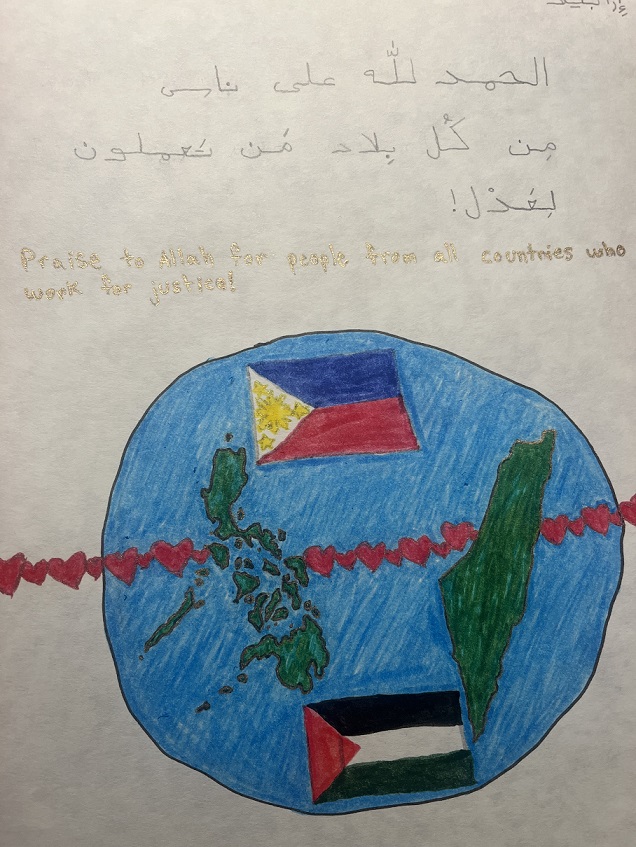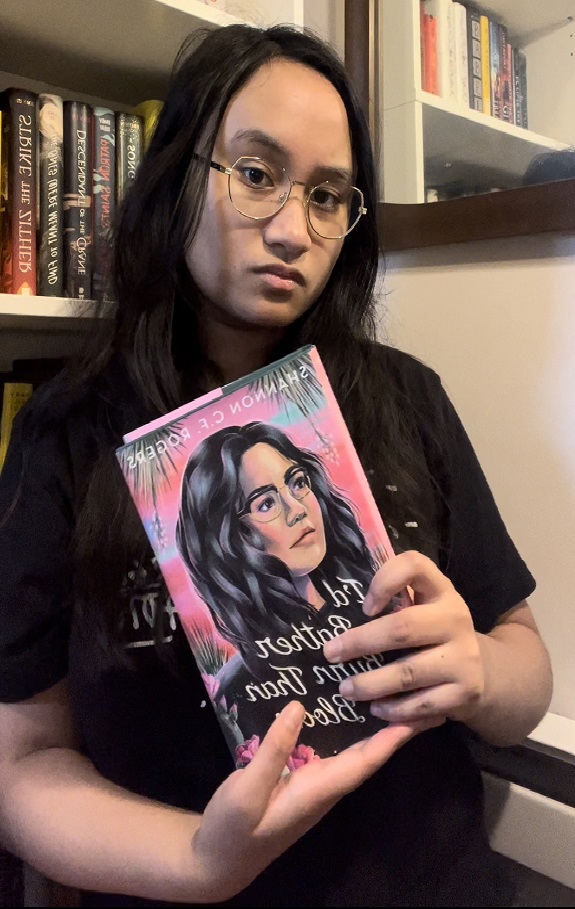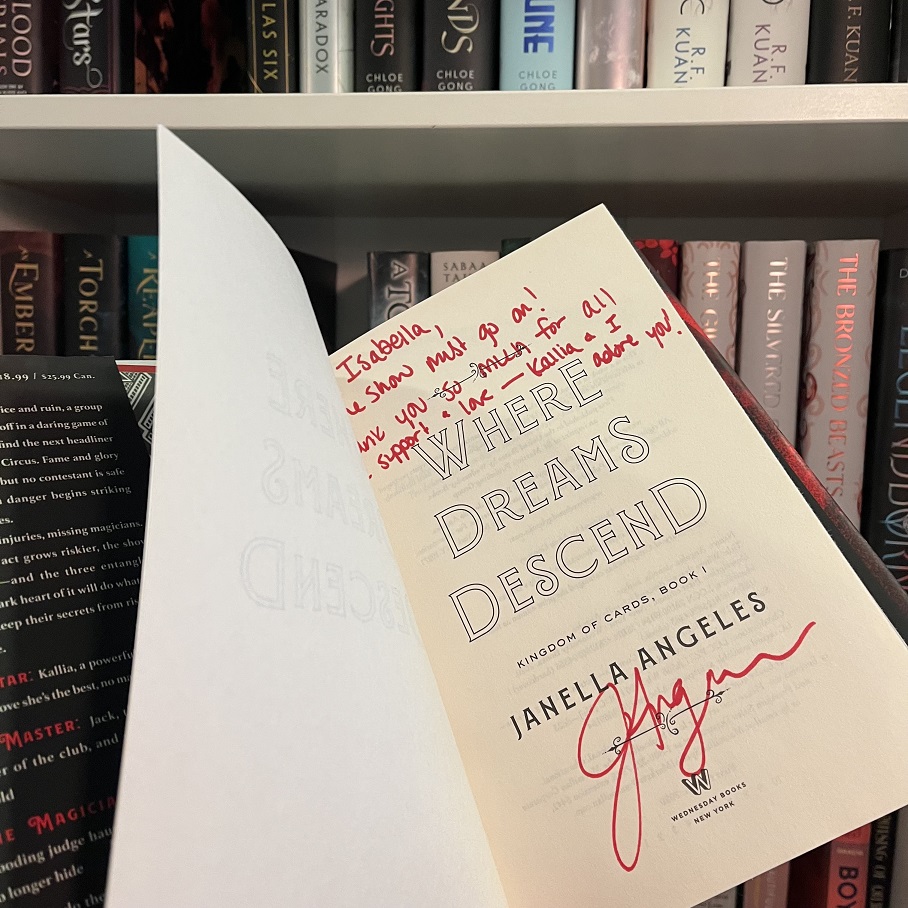Arabic and the Philippines: A Labyrinth of Bonding Possibilities
.jpg)
marHaba! Salamaat! My name is Isabella Steele, and I am a sophomore majoring in Global Studies and Political Science with a minor in Arabic Language & Culture at Loyola. I am a Filipino adoptee, born in the U.S. It has not been until I have come to Loyola that I have found a Filipino community in KAPWA, the Filipino Student Organization. Through KAPWA, I have learned about various Filipino dances, youth movements in the Philippines, and overall, I have joined a welcoming community that I know is always there for me. (My photo below is with KAPWA at the Filipino Americans Coming Together Conference (FACT) 2023).

The Philippines is a vast country of numerous cultures and languages. When I was about 13 years old, I humbly researched a bit on the imperial interest in it and its impact. The Philippines was colonized, politically, economically, and culturally for over 300 years- first by Spain and then by the United States of America (U.S.). It is important to recognize the amalgamation of cultures and civilizations that has been shaping the country’s identities prior to the Spanish and American perpetuation of what we know as the Philippines today. Upon graduating my high school, I decisively decorated my graduation cap with the Philippines flag star!

When joining Loyola, I knew I wanted to study a world language spoken in the country of my ancestors. However, Loyola does not offer Tagalog, the main language of the Philippines today (although KAPWA students have hosted Tagalog learning sessions). Therefore, I decided to study Arabic when I found out that it is a recognized minority language in the Philippines, where my birthmother is from. While researching Arabic in the Philippines, I realized that Arabic is still spoken today in Mindanao Island. Arabic first arrived in Mindanao Island during the 1000s and flourished during the 14th century by Arab traders in the region- some of them settled there. Arabic eventually evolved into a lingua franca; a language spoken by two people who did not grow up with the same language. Through these Arab traders, Indigenous people of Mindanao Island learned Arabic and combined/adapted its use within their own language/culture. Unlike the controversial Spanish arrival with its hierarchical association towards the Indigenous people of the Philippines, Arab traders appreciated mixing and intermingling with the locals fusing beautifully diverse languages and cultures.

At the simple level of vocabulary, several Tagalog words are derived from Arabic. One Tagalog greeting, “Salamat”, comes from the Arabic word for peace, which is salaam. cilm, which means knowledge in Arabic, influenced the Tagalog phrase “alam mo ba” which means do you know. The Tagalog word “mabuhay” which means may your life be long, has the word Hayy which means living in Arabic. Arabic is still integrated into Filipino society today, specifically in Mindanao. In 201, an education system called madrasah in Mindanao (which comes from the Arabic word madrasa(t) for school) received funding to be further included in the national education system of the Philippines. One of the components of the madrasah is Arabic Language and Islamic values. More examples of the subtle connections of Arabic to the Philippines can be further excavated.

Again, I am not sure specifically where my ancestors are from in the Philippines, but I do know that I’m enthusiastic to learn about as many cultures of the Philippines as possible. I do take special interest in promoting and connecting with Filipino authors (images shared here). Learning Arabic allowed me a venue to deeply reflect on my own native Filipino identity, to research trajectories of colonial encounters, and to critique the limited historical introductions, if any, to such topics in the Philippines in the US school system. There is ample variation to Filipino culture(s) which may stereotypically be misrepresented and even downgraded due to lack of knowledge. I am so grateful that my Arabic classes have provided me with this opportunity to research my homeland! Learning to speak Arabic language allows me an innovative emotional bond to my homeland thousands of miles away.

